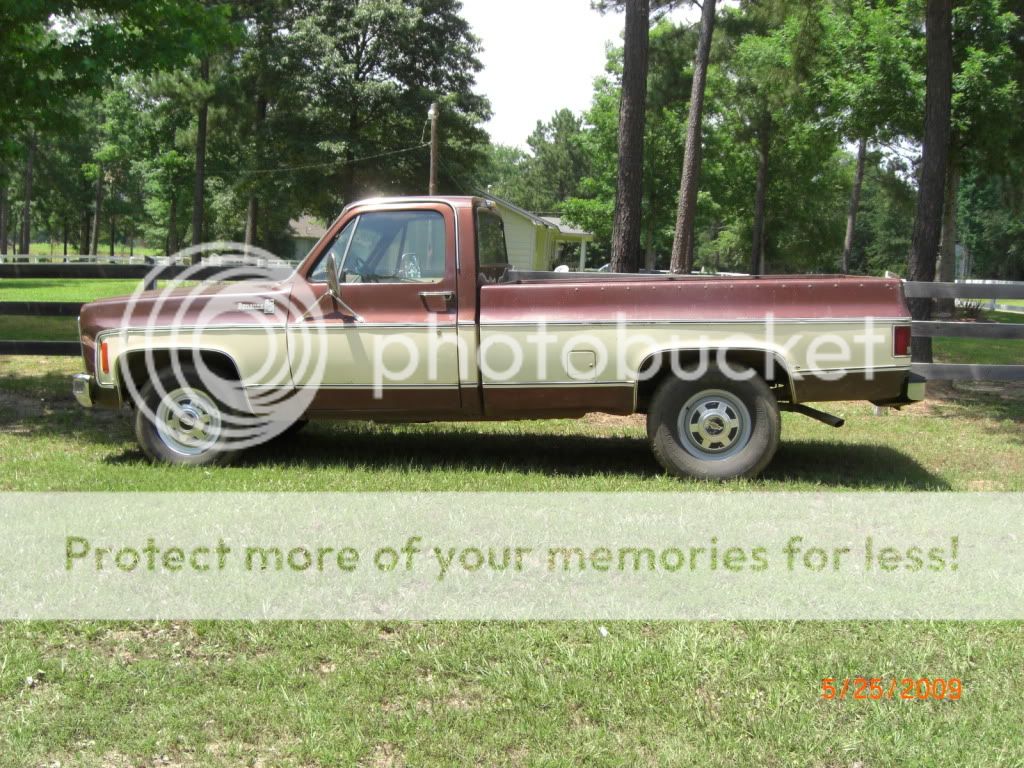Anonymous-0
Well-known Member
I have a heavy duty 1/2 ton Ford truck, trailering package etc. Do you think it would be safe enough to haul a Farm tractor weighing about 8000 lbs.with a good bumper hook trailer?...thanks in advance.
(quoted from post at 09:52:43 05/28/11) stick it dude! it was just a question?
(quoted from post at 10:12:07 05/29/11)
But I dont think there is much question that trucks 35 years ago were a little heavier than they are now. I routinely hauled 2500 lbs from the feed mill in my 1/2 t Chevy Scottsdale.
(quoted from post at 04:51:34 05/31/11)(quoted from post at 10:12:07 05/29/11)
But I dont think there is much question that trucks 35 years ago were a little heavier than they are now. I routinely hauled 2500 lbs from the feed mill in my 1/2 t Chevy Scottsdale.
Completely opposite is true. Modern 1/2 ton trucks are as heavy if not heavier than a 3/4 ton from 30 years ago. At least frame wise. My 2001 Chevy 1/2 ton is rated for 6400 or 6800 gvw. My 1979 C20, 7200 gvw, and it is a heavy "Camper Special". The only thing heavier is the springs and 14 bolt rear.
CT
(quoted from post at 06:33:01 06/02/11) For all practical purposes, a 1/2 ton truck should NOT be considered a work truck anymore.
(quoted from post at 07:19:12 06/02/11)(quoted from post at 06:33:01 06/02/11) For all practical purposes, a 1/2 ton truck should NOT be considered a work truck anymore.
Why not?
Most manufactures are now using either completely boxed or partially boxed frames. Compared to the rubber like C-channel frames of yesteryear.
Brakes are much larger now with most trucks requiring 17"+ wheels to clear their larger brakes. No more tiny single piston calipers shoved inside 15" wheels with room to spare.
Power is way up from what it was years ago. An early 80's chevy K10 with a 5.7L had 175hp and 275tq IIRC. A 2011 K1500 with a smaller 4.8L makes 302hp and 305tq; and the 5.3L makes 315hp and 338tq.
What makes old 1/2 tons sooooo much greater??? hahaha
(quoted from post at 07:57:05 06/02/11)
Crawl under a truck that was built in the '50s or '60s and take a good look at the CHANNEL IRON frame under those trucks and you quickly understand why the manufacturers of todays trucks need to box in those flimsy, stamped steel frames.
If you are going to compare todays engines to those of yesteryear, compare apples to apples and find out just how fast that 4.8 has to be spinning when it makes that kind of horsepower. I think you will find out that the RPMs required are significanly higher than anything you will ever see during normal highway driving.


(quoted from post at 09:43:05 06/02/11)(quoted from post at 07:57:05 06/02/11)
Crawl under a truck that was built in the '50s or '60s and take a good look at the CHANNEL IRON frame under those trucks and you quickly understand why the manufacturers of todays trucks need to box in those flimsy, stamped steel frames.
If you are going to compare todays engines to those of yesteryear, compare apples to apples and find out just how fast that 4.8 has to be spinning when it makes that kind of horsepower. I think you will find out that the RPMs required are significanly higher than anything you will ever see during normal highway driving.
I have a truck from the 60's with a CHANNEL IRON frame. When you load the bed with stuff and flex the truck (driving across a small ditch in a pasture) at all the bed and cab move 6" apart on one side and touch on the other. This is common knowledge and many people who use those old trucks off-road box the frames, or build new frames.
On the other hand my neighbors new chevy truck with a boxed frame and the frame is rock solid no matter what he is doing with it.
Sure the newer motors make power at higher RPM's but with the 5 and 6 speed transmissions and different axle gears they are able to use that power.
(quoted from post at 10:17:54 06/02/11)
You missed the point entirely. Go back and read my statement again.
(quoted from post at 06:33:36 08/14/11) Your obviously from the chevy camp.
We sell tractor parts! We have the parts you need to repair your tractor - the right parts. Our low prices and years of research make us your best choice when you need parts. Shop Online Today.
Copyright © 1997-2024 Yesterday's Tractor Co.
All Rights Reserved. Reproduction of any part of this website, including design and content, without written permission is strictly prohibited. Trade Marks and Trade Names contained and used in this Website are those of others, and are used in this Website in a descriptive sense to refer to the products of others. Use of this Web site constitutes acceptance of our User Agreement and Privacy Policy TRADEMARK DISCLAIMER: Tradenames and Trademarks referred to within Yesterday's Tractor Co. products and within the Yesterday's Tractor Co. websites are the property of their respective trademark holders. None of these trademark holders are affiliated with Yesterday's Tractor Co., our products, or our website nor are we sponsored by them. John Deere and its logos are the registered trademarks of the John Deere Corporation. Agco, Agco Allis, White, Massey Ferguson and their logos are the registered trademarks of AGCO Corporation. Case, Case-IH, Farmall, International Harvester, New Holland and their logos are registered trademarks of CNH Global N.V.
Yesterday's Tractors - Antique Tractor Headquarters
Website Accessibility Policy
